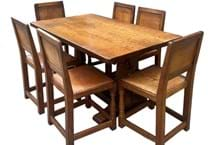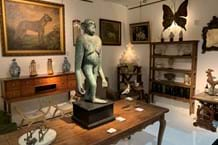ALL hail the conspiracy theory and Mr Muscarella offers us another within the “forgery culture”; the “existence of a clandestine order that includes individuals with the will, determination and financial and political power to control information, people and institutions”.
For Mr Muscarella the forgery culture has a hierarchical structure, laws, a coded language, judges and juries, and a police force. He points the finger at professors, curators, museum officials and trustees, smugglers, dealers, auction houses, collectors and forgers – a fifth column of the archaeological domain created by the heavy overlap between plundered antiquities and forged artefacts.
Dynamite.
Mr Muscarella, an archaeologist and an affiliate of the Metropolitan Museum of Art’s Near Eastern Art department since 1964, is a man of passion and a man with a mission; to preach the evils of the antiquities trade and the plunder that supplies it. The book’s central theory is that scholars of antiquity remain cavalier in their treatment of objects that are presented as ancient, but which have little or no concrete evidence that they have been properly recovered from an archaeological excavation of a known site.
He names many names within the Forgery Culture and the Museum Ritual.
“Just the tip of the iceberg,” according to Mr Muscarella, are the 1250 forgeries, ranging from Assyrian bronzes to 4000-year-old Sumerian figurines in lapis lazuli which are in the collections of the world’s finest museums. Among British collections Muscarella identifies 16 fakes in the British Museum, 21 in the Ashmolean and 12 in Glasgow’s Burrell Collection, while the Louvre has 37 and the Metropolitan Museum of Art 45.
Many keepers of antiquities take the view that there are forgeries in every museum; when they are known as such they are identified.
Pages 1-29 are taken up with Mr Muscarella’s crusading zeal where he blames a “close relationship between scholarship and commerce” for the successful proliferation of forgeries and discusses the insidiousness of the forgery of provenances.
The book’s second part, the Catalogue, is a list of 1000-plus objects, mostly illustrated and none fully described, that have been identified as ancient Near Eastern artefacts which Muscarella believes to be suspect or forgeries. Having excavated in Turkey and Iran, he has used his knowledge of sites, stylistic mistakes in fakes and similarity with other forgeries to underpin his argument that every ancient object must be challenged to prove that it is genuine. He notes that of the objects sent to the Oxford Thermoluminescence Laboratory, set up specifically to determine the age of so-called ancient objects, 40 per cent are fake. Mr Muscarella whiplashes himself into action here with his explanations, some highly detailed and scholarly. Others he dismisses as fakes with comments such as “seem queer”, “as stupid as they come”, “my gut feeling”.
Mr Muscarella sees himself as a lone voice crying out in a wilderness populated by philistines and second-rate curators, but his unswerving views have drawn increased attention to the trade in forgeries, to the issue of forged provenance, and to the notion that while museums are supported by the public, many still operate in a veil of secrecy. In the book’s dedication he thanks many of his friends who “gave me moral support and encouragement when I experienced despair over scholarly behaviour”. Muscarella’s remarkable book takes no prisoners.
Conspiracy theorist out on his own
The Lie Became Great: The Forgery of Ancient Near Eastern Cultures, by Oscar White Muscarella, published by Styx Publications, Postbus 2659, 9704 CR Groningen, The Netherlands. ISBN 9056930419 NG250. (approx £75)




